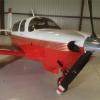Mooney tail aerodynamics - not backwards
-
Members Online
- Tmooney
- RangerM20
- EricJ
- Robm
- hammdo
- spitzfyre
- Bartman
- dzeleski
- BrettD
- dkkim73
- boboxa9895
- Sabremech
- Rwsavory
- mooneygirl
- lithium366
- M20F
- Mcstealth
- jamesyql
- varlajo
- Ragsf15e
- gabez
- phxcobraz
- shawnd
- bloghill
- Gary0747
- PT20J
- Fast Yellow Fellow
- CCAS
- Ron McBride
- laytonl
- Glen S.
- DMM
- takair
- enginenerd
- Tom F
- DanM20C
- M20S Driver
- jordanjms
- mluvara
- Shrobby
- TCC
- 1980Mooney


Recommended Posts
Join the conversation
You can post now and register later. If you have an account, sign in now to post with your account.